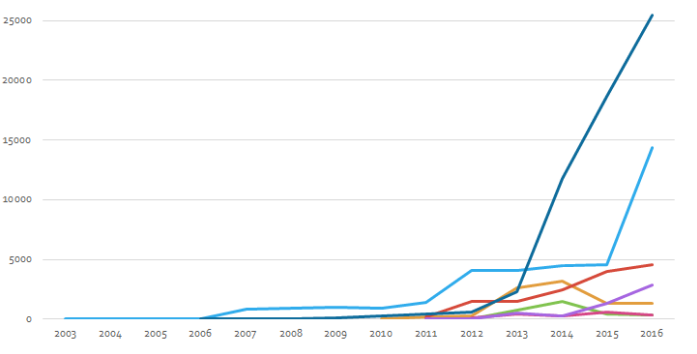
Open Access publishing has shown steady growth
A new study shows that, over the past 15 years, Open Access grew rapidly. According to the study done by Piwowar et al., Open Access articles account for 28% (or 19 million articles) of all scholarly literature. In 2015, around 45% of all scholarly articles were published or deposited on OA platforms. As a result of this remarkable growth, open access publishing has become one of the dominant publishing models. Open access articles are widely used and accessed. Moreover, Open Access articles are 18% more cited that non-Open Access. Now Open Access challenges the status quo and threatens traditional publishers.
There are four types of open access models identified by the researchers: Green, Gold, Bronze and Hybrid. According to this study Bronze OA is the one driving up the number of OA articles citation and its share in the industry. Green and Hybrid OA are also playing significant roles. The contribution of Gold OA is small, the study finds. The study, nonetheless, did not reveal why this is the case. Obviously, due to the cost associated with Gold OA, there are less number of Gold OA articles than Green and Bronze OA. Article Process Charges (APCs) could undermine the role of Gold OA in terms of citation impact and OA papers share, both a function of quality and quantity of OA articles published.
Subscription to journals cost universities and libraries millions of euros per year. The subscription cost increases on yearly basis; usually surpassing the rate of inflation. This has become a huge challenge both for institutions in developed and developing countries. Access-fee-related challenges are forcing researchers and libraries to resort to OA articles and OA repositories.
Peerj | The State of OA: A large-scale analysis of the prevalence and impact of Open Access articles

